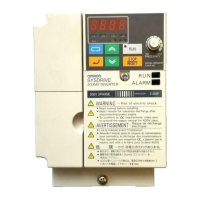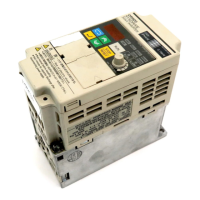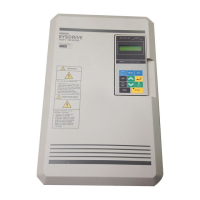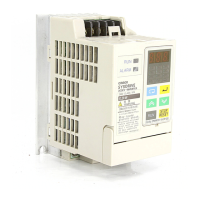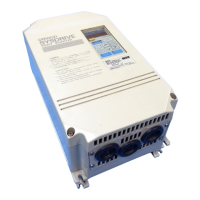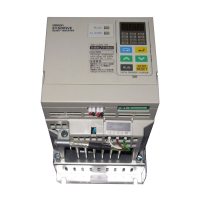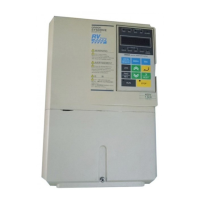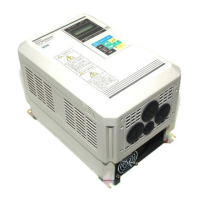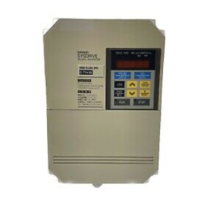suppression
method
5th
har-
monic
7th
har-
monic
11th
har-
monic
13th
har-
monic
17th
har-
monic
19th
har-
monic
23rd
har-
monic
25th
har-
monic
No reactor 65 41 8.5 7.7 4.3 3.1 2.6 1.8
AC reactor 38 14.5 7.4 3.4 3.2 1.9 1.7 1.3
DC reactor 30 13 8.4 5 4.7 3.2 3.0 2.2
DC and AC
reactors
28 9.1 7.2 4.1 3.2 2.4 1.6 1.4
H Connecting the Braking Resistor and Braking Resistor Unit
Whenrunningaloadwithalargeinertiaoraverticalaxis,regenerationenergywillreturn
to the Inverter. If OV (overvoltage) is generated during deceleration, this indicates that
the regeneration energy is exceeding the capacity of the Inverter. In this case, use a
Braking Resistor or a Braking Resistor Unit.
·Connect the Braking Resistor as shown in the following diagram.
Note 1. When using a Braking Resistor, install a thermal relay to monitor the tempera-
ture of the resistor.
Note 2. When using a Braking Resistoror a Braking Resistor Unit,be sure toinclude a
sequence whereby the power supply for the Inverter will be turned OFF in the
case of abnormal overheating. Not doing so may result in burning.
S Braking Resistor: Usethe outputof the thermalrelay used tomonitor thetempera-
ture of the thermometer.
S Braking Resistor Unit: Use the error contact output of the Braking Resistor Unit.
Design Chapter 2
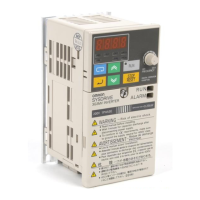
